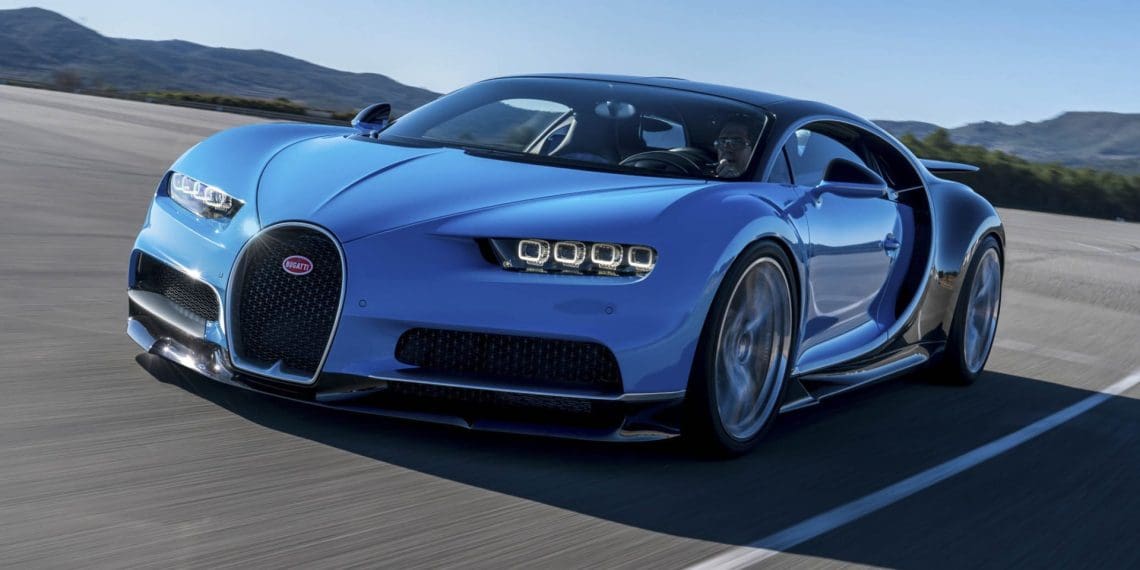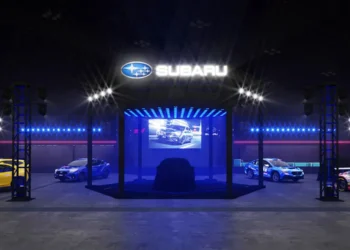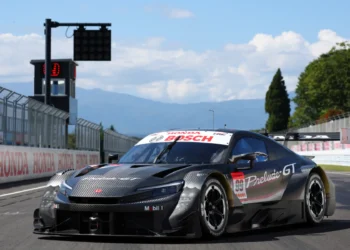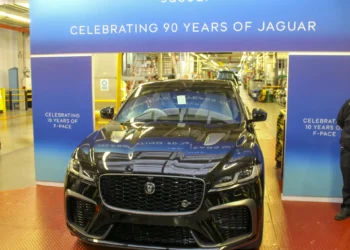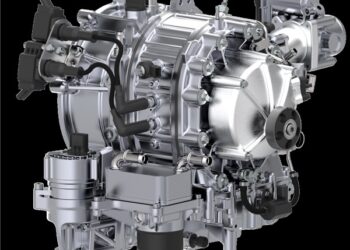Last week, one of the world’s most revered series of automotive events – Monterey Car Week – attracted automotive enthusiasts and iconic brands from all over the world to the coast of California. The week-long celebrations were crowned by standout events such as The Quail, A Motorsports Gathering and the Pebble Beach Concours d’Elegance, where Bugatti models past and present came together to reveal the threads of innovation, craftsmanship and design that link every Bugatti. This year, more than ever, Monterey Car Week symbolized the passing of the torch at Bugatti, with the closing of the Chiron era and the embarking of the Tourbillon era.
At The Quail, A Motorsports Gathering on Friday 16th, the Bugatti Tourbillon¹ was presented on American soil for the first time, allowing many visitors their very first close-up experience of a new Bugatti era. Designed Pour L’éternité (for eternity), the Tourbillon has been envisioned from the very beginning as a car that could appear on the lawns of Quail Lodge a century into the future. With a timeless naturally aspirated V16 engine – paired with three electric motors – a fully mechanical driver instrument cluster built with the help of Swiss watchmakers, no visible digital screens and an ageless aerodynamics-led design, the Tourbillon is designed to endlessly appeal, just as the vintage Bugatti cars on display at The Quail – including the iconic Type 57 and pioneering EB110 – have done.
In amongst an audience comprised of some of the greatest car collectors and enthusiasts in the world, celebrating the finest brands and products, CEO Mate Rimac and Design Director Frank Heyl presented the vision behind the Tourbillon. Parked side-by-side with the bare rolling chassis – in itself a piece of automotive art – the guiding tenets of Ettore Bugatti such as ‘nothing is too beautiful’ and ‘if comparable it is no longer Bugatti’, were clear to see. Representing the Bugatti leadership team, President Christophe Piochon, CTO Emilio Scervo, and Managing Director Hendrik Malinowski shared the brand’s future vision.
During their time in Monterey, Bugatti customers had the opportunity to visit Le Domaine Bugatti, located at The Lodge at Pebble Beach, not only for a more detailed insight into the Tourbillon – including its bare carbon monocoque and chassis – but also for a number of other Bugatti models and Bugatti Lifestyle products. Among them, inspired by the Tourbillon and its elegant shade of blue, Champagne Carbon showcased its Tourbillon 15-liter bottle for the first time. Hedley Studios presented the Baby Bugatti II, while Jacob & Co introduced its range of hand-crafted Bugatti timepieces, including the newly unveiled Tourbillon watch. This unmatched timepiece deploys a mechanism that reflects Bugatti’s all-new V16 engine, with sub-dials designed like the car’s dashboard and RPM counter. Its automaton mimics the V16 engine block, complete with exhaust manifolds, and the winding crown echoes the finish on the Tourbillon’s control buttons.
This sense of incredible craftsmanship was tangible everywhere at Le Domaine, whether it be with Asprey’s most famous Bugatti sculpture masterpieces or precious metal objet eggs, in the beautifully designed Bugatti Residences by Binghatti model – the first luxury living develop in Dubai – or the showcase of ‘La Bouteille Sur Mesure’.
Outside and visible for the public, the private Domaine reunited the Bolide² and Type 35 – which had appeared together on track at the Laguna Seca circuit earlier in the week in homage to the Type 35’s 100-year anniversary – alongside a showcase of the final Chiron model produced: ‘L’Ultime’. Adorning its bodywork are hand-written places and events that helped to build the legend of the Chiron, including Pebble Beach, where Bugatti once again shone at the Concours d’Elegance.
Set against the shining Pacific Ocean on the 18th fairway of the Pebble Beach Golf Links, the Concours d’Elegance kicked off early on Sunday morning with the ‘Dawn Patrol’. Hundreds of visitors took to the Links just as the sun rises above the horizon, this year treated to a number of rare Bugatti models among the line-up. Gleaming in the California sunshine, with elegantly dressed attendees picnicking nearby, these cars stood as marvels among the hundreds of perfectly preserved or gracefully aged vintage cars on display, ready to be judged by a team of experts that include former Bugatti Director of Design, Achim Anscheidt.
The Pebble Beach judging process is one of the most comprehensive in the world, focusing on a car’s history, originality, the accuracy of its preservation or restoration and its style. In amongst a line-up of the most incredible cars in the world, it was a Bugatti Type 59 Sports that won the much-coveted Best of Show award.
In 1934, this Type 59 claimed victory at the Belgian Grand Prix with Rene Dreyfus at the wheel and secured third place at the Monaco Grand Prix later that year. Ettore Bugatti later sold four of his factory Type 59 racers but retained this particular car, the first of its kind. He removed the supercharger and transformed it into a sports car, outfitting it with a new two-seater body, complete with motorbike wings and side doors.
Re-registered as a Type 57 (chassis number 57248), the car continued its winning streak, defeating Delahayes and Talbots at Pau in 1937, followed by triumphs at the Algerian and Marne French Grand Prix under the control of Jean-Pierre Wimille. Eventually, King Leopold I of Belgium acquired the Bugatti and had it repainted in black with a Belgian yellow stripe – its current appearance.
This historic victory represents the first time an unrestored car has won Best of Show at the Pebble Beach Concours d’Elegance, and also secures Bugatti as joint-leader of the all-time Best of Show winners’ table.
As testament to this particular Type 59 Sports’ beauty, condition and history, it was also awarded the Center for Automotive Research at Stanford (CARS) Award for Automotive Innovation.
In addition to this tenth Best of Show win, Bugatti vehicles excelling in multiple categories underscored its unrivaled dedication to craftsmanship and innovation, further cementing the marque’s legacy.
Claiming the sought-after French Cup, which was established in the mid-1980s, and is awarded to the most significant car of French origin, was a 1937 Bugatti Type 57SC Corsica Roadster. Bodied by British coachbuilder Corsica, and just one of two built with similar four-seat, open tourer bodies, the exceptional example (chassis number 57512) was first owned by friend of Jean Bugatti and former Vice-Chairman at Rolls-Royce, Maurice Fox-Pitt.
The title for J-3: European Classic Sport is reserved for models of a dual nature, perfect examples of a car built for the road but one that can also be raced. It is therefore fitting that the legendary Bugatti Type 55 Roadster from 1933 collected first place. Essentially a competition Bugatti, the Type 55 Roadster utilizes much of the mechanical configuration that made the Type 51 Grand Prix so successful. Yet, it was wrapped in the elegant road-going coachwork of Jean Bugatti.
Giving appreciation to cars that bear witness to history, the L-1: Prewar Preservation award covers a range of ‘unrestored’ classics from untouched barn finds to those that have been cared for lovingly over the years. This title completed a trio of wins for the 1934 Bugatti Type 59 Sports from The Pearl Collection in Switzerland. A result that further validates the beauty and history of Bugatti’s past.
Notable achievements also came with two second second-place awards, showcasing the marque’s exceptional heritage. In the J-2: European Classic Touring Late category, the 1938 Bugatti Type 57C Gangloff Aravis, earned second place, highlighting its entirely unique rear opening doors and the fact that it is one of two in existence that were originally supercharged.
Meanwhile, in the R: 1990s BPR & FIA GT Race Cars class, the 1995 Bugatti EB110 Sport Competizione (chassis SS44), secured a second-place finish, reflecting its remarkable racing pedigree. One of just two EB110 vehicles built for racing, the stunning example was developed and built in-house at the Bugatti Automobili S.p.A Campogalliano factory.
Hosted on the Bugatti stand, the Tourbillon sat as the newest shining beacon of Bugatti design, engineering and craftsmanship. Drawing inspiration from the timelessness of the vintage Bugatti models found elsewhere on the lawn, the display at Pebble Beach brought the vision of the Tourbillon into clear focus. Despite being separated by up to 100 years, the shared DNA of a Type 35 and the Tourbillon mark them as two connected eras in the long and enduring story of the Bugatti brand.
“Monterey Car Week is a special collection of events, and one that draws together our glorious heritage and the exciting present and future of the Bugatti brand like no other. This year’s celebrations feel all the more poignant for us, as we both celebrate the centenary of the Type 35 but we also accelerate forwards into a new era with the Tourbillon. The brand today is inspired by our history: we look back to the visionary engineering of Ettore Bugatti, to the elegant designs of Jean Bugatti and to the bold ambition of Romano Artioli in everything we do. Celebrations like these that allow us to see the Type 35 racing 100 years on, or to see Bugatti models admired and revered at the world’s most famous Concours d’Elegance inspire us and guide us to create the Bugatti icons of the future.”

